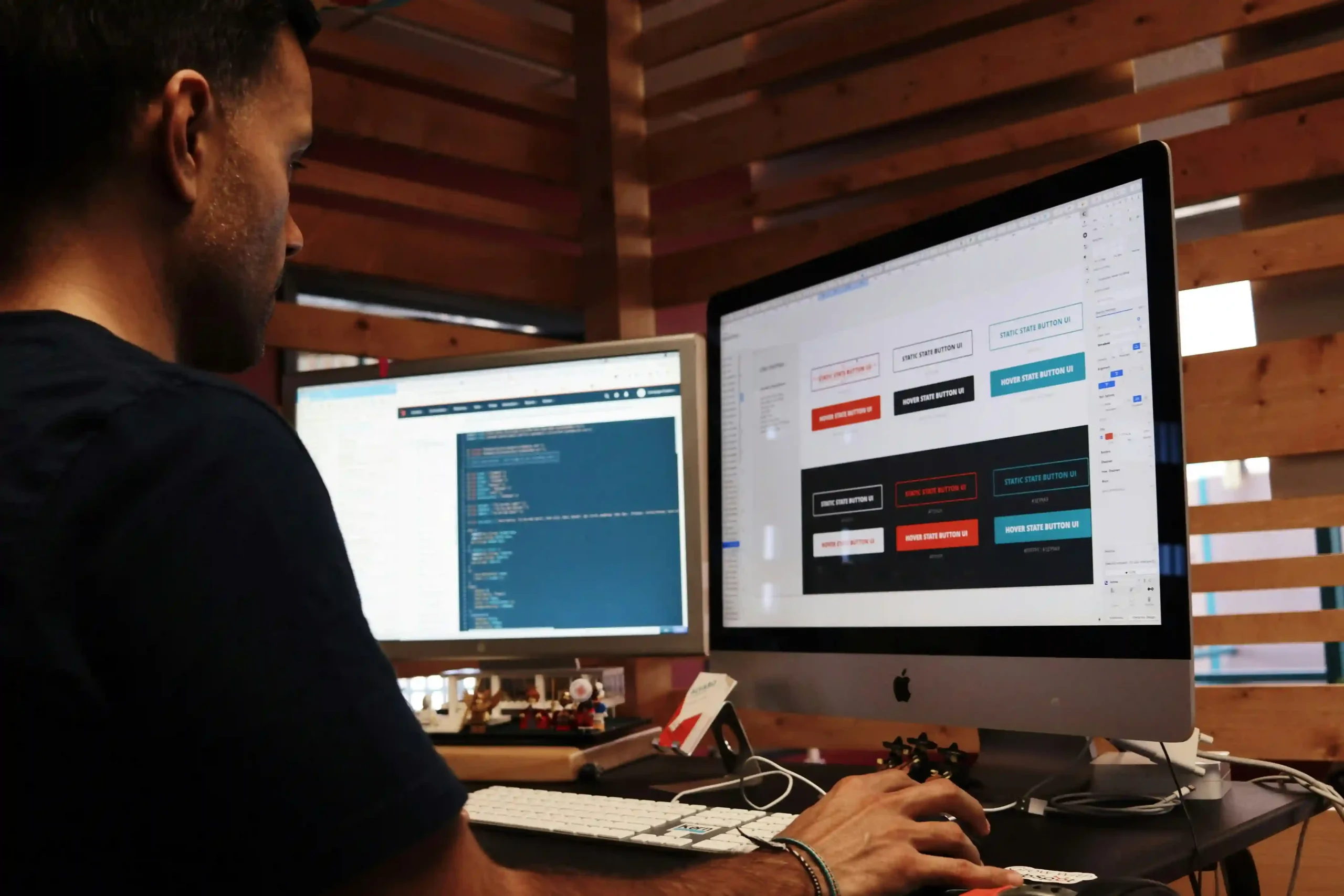How to Design a Web Page Layout
ghifari
June 21, 2024
7 min read

Designing a web page layout is a crucial aspect of creating an effective and engaging website. A well-designed layout not only enhances the user experience but also helps in achieving business goals by guiding visitors towards desired actions. This guide will walk you through the essential steps of designing a web page layout that is both visually appealing and functional. Whether you’re a beginner or an experienced designer, these tips and strategies will help you create a web page layout that stands out.
Understanding the Basics of Web Page Layout
Before diving into the design process, it’s important to understand the basics of web page layout. The layout is essentially the arrangement of visual elements on a web page, including text, images, and other multimedia content. A good layout should be intuitive, easy to navigate, and visually pleasing. Here are some key principles to keep in mind:
- Consistency: Maintain a consistent look and feel throughout your website to create a cohesive user experience.
- Simplicity: Avoid clutter and focus on clean, simple designs that make it easy for users to find what they’re looking for.
- Accessibility: Ensure your design is accessible to all users, including those with disabilities.
- Responsiveness: Design your layout to be responsive, so it looks good on all devices, from desktops to smartphones.
Planning Your Web Page Layout
Before you start designing, it’s important to plan your layout. This involves understanding the purpose of your website, your target audience, and the key actions you want visitors to take. Here are some steps to help you plan:
Define Your Goals
What do you want your website to achieve? Are you looking to sell products, generate leads, provide information, or build a community? Clearly defining your goals will help you design a layout that supports these objectives.
Know Your Audience
Understanding your target audience is crucial for designing a layout that meets their needs. Consider factors such as age, gender, interests, and browsing habits. This information will help you create a user-friendly design that appeals to your audience.
Create a Site Map
A site map is a visual representation of the structure of your website. It outlines the main sections and pages, showing how they are interconnected. Creating a site map helps you organize your content and ensure a logical flow.
Wireframe Your Layout
A wireframe is a basic sketch of your web page layout. It doesn’t include design elements like colors or images but focuses on the placement of key elements such as headers, navigation, content areas, and footers. Wireframing allows you to experiment with different layouts and find the one that works best for your goals.
Essential Elements of a Web Page Layout
A successful web page layout typically includes several key elements. Understanding these elements and how to use them effectively is crucial for creating a functional and aesthetically pleasing design.
Header
The header is usually located at the top of the page and contains important information such as the logo, navigation menu, and contact details. A well-designed header helps users quickly understand what your website is about and navigate to different sections.
Navigation
Effective navigation is essential for a good user experience. Your navigation menu should be easy to find and use, with clear labels that guide users to the most important pages on your site. Consider using a sticky menu that stays at the top of the page as users scroll down.
Main Content Area
The main content area is where the bulk of your information is displayed. This can include text, images, videos, and other multimedia elements. Ensure your content is well-organized and easy to read. Use headings, subheadings, bullet points, and white space to break up large blocks of text.
Sidebar
A sidebar can be used to display additional information or functionality, such as a search bar, recent posts, or social media links. While not all websites need a sidebar, it can be a useful way to provide supplementary content without cluttering the main content area.
Footer
The footer is located at the bottom of the page and typically contains information such as copyright details, privacy policy links, and contact information. It’s also a good place to include secondary navigation links.
Call to Action (CTA)
A call to action is a prompt for users to take a specific action, such as signing up for a newsletter, making a purchase, or contacting you. CTAs should be prominently displayed and use persuasive language to encourage users to take the desired action.
Best Practices for Web Page Layout Design
Now that you understand the basic elements of a web page layout, let’s explore some best practices for designing an effective layout.
Keep It Simple
Simplicity is key to a good web page layout. Avoid clutter and focus on creating a clean, minimalist design. Use plenty of white space to give your content room to breathe and make it easier for users to read and navigate.
Use a Grid System
A grid system helps you align elements on your page and create a balanced, orderly layout. Most modern web design tools include grid systems that make it easy to create consistent designs.
Prioritize Content
Ensure that your most important content is prominently displayed. Use visual hierarchy to guide users’ attention to key elements, such as headlines, CTAs, and important messages.
Optimize for Mobile
With more people accessing the web on mobile devices, it’s essential to design your layout to be responsive. This means your website should look and function well on all screen sizes, from large desktop monitors to small smartphone screens.
Use High-Quality Images
Images can enhance your web page layout and make it more engaging. Use high-quality images that are relevant to your content and optimize them for fast loading times. Avoid using generic stock photos and instead opt for original, authentic images.
Test and Iterate
Designing a web page layout is an ongoing process. Use A/B testing and user feedback to evaluate the effectiveness of your design and make improvements as needed. Regularly updating your layout based on user behavior and preferences can help you achieve better results.
Tools for Designing Web Page Layouts
There are many tools available to help you design a web page layout. Here are some popular options:
Design Software
- Adobe XD: A powerful design tool for creating wireframes, prototypes, and high-fidelity designs.
- Sketch: A vector graphics editor with a focus on user interface and user experience design.
- Figma: A collaborative design tool that allows multiple users to work on a design simultaneously.

Photo by Tran Mau Tri Tam ✪ on Unsplash
Wireframing Tools
- Balsamiq: A simple wireframing tool that helps you create low-fidelity mockups.
- Mockplus: An easy-to-use tool for creating interactive wireframes and prototypes.
- Axure RP: A comprehensive wireframing and prototyping tool with advanced features for creating detailed designs.
Website Builders
- WordPress: A popular content management system with many themes and plugins for designing web page layouts.
- Wix: An easy-to-use website builder with drag-and-drop functionality.
- Squarespace: A website builder with a focus on beautiful, professional designs.
Conclusion
Designing a web page layout involves a combination of planning, creativity, and technical skills. By understanding the basics of layout design, planning your layout effectively, and following best practices, you can create a web page that is both visually appealing and user-friendly. Remember to keep your design simple, prioritize your content, and optimize for all devices. With the right tools and a commitment to ongoing improvement, you can design a web page layout that helps you achieve your business goals and provides a great experience for your users.
Related Article
What is a Web Designer Responsible For?
In the digital age, a web designer plays a crucial... In the digital age, a web designer plays a crucial role in creating and maintaining the face of the internet....
Web Design for Business: A Comprehensive Guide
In the modern digital age, a well-designed website is crucial... In the modern digital age, a well-designed website is crucial for any business aiming to succeed. A website not only...
How to Choose a Web Design Company: A Comprehensive Guide
Choosing the right web design company can be a daunting... Choosing the right web design company can be a daunting task, especially with the plethora of options available today. Your...


